Apollo 11 Launch

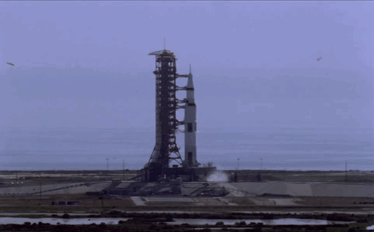
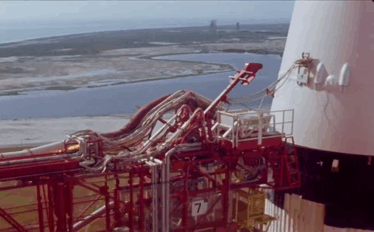
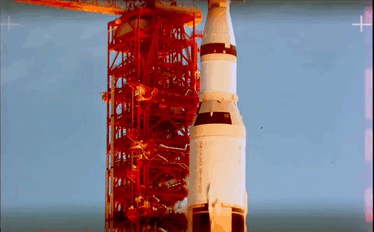
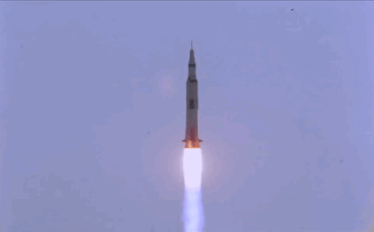
Apollo 11 Launch
More Posts from Xyhor-astronomy and Others
Oldest recorded solar eclipse helps date the Egyptian pharaohs

UNIVERSITY OF CAMBRIDGE—Researchers have pinpointed the date of what could be the oldest solar eclipse yet recorded. The event, which occurred on 30 October 1207 BC, is mentioned in the Bible, and could have consequences for the chronology of the ancient world.
Using a combination of the biblical text and an ancient Egyptian text, the researchers were then able to refine the dates of the Egyptian pharaohs, in particular the dates of the reign of Ramesses the Great. The results are published in the Royal Astronomical Society journal Astronomy & Geophysics.
The biblical text in question comes from the Old Testament book of Joshua and has puzzled biblical scholars for centuries. It records that after Joshua led the people of Israel into Canaan - a region of the ancient Near East that covered modern-day Israel and Palestine - he prayed: “Sun, stand still at Gibeon, and Moon, in the Valley of Aijalon. And the Sun stood still, and the Moon stopped, until the nation took vengeance on their enemies.” Read more.

The Heart Nebula or IC 1805, lies some 7500 light years away from Earth and is located in the Perseus Arm of the Galaxy in the constellation Cassiopeia. This is an emission nebula showing glowing ionized hydrogen gas and darker dust lanes.
Image Credit: Simon Addis
ISS | Credit: NASA
Time-lapse imagery captured June 25, 2017 by Expedition 52.
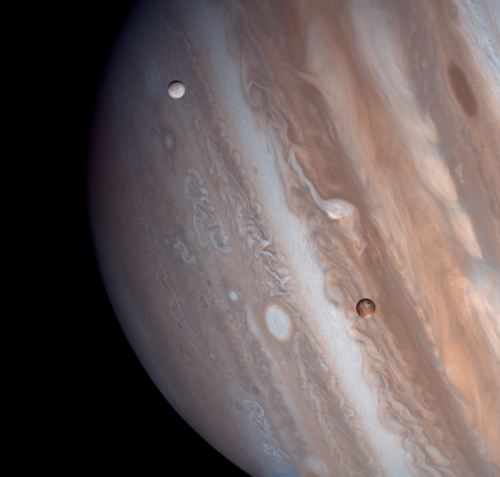
Io and Europa taken by the Voyager 1 spacecraft in 1979
Image credit: Justin Cowart

Oct. 4, 1957 - Sputnik, the Dawn of the Space Age via NASA http://ift.tt/2hNf1Yq
Solar System: Things To Know This Week
Weather permitting, you can observe the Moon most nights, unless it’s a new moon, when the lighted side of the Moon faces away from Earth. The Moon is by far the brightest object in the night sky and there’s plenty to see. But this week is special…

…October 28 is International Observe the Moon Night (also known as InOMN).
Here’s all you need to know to join in and celebrate:
1. One Planet. One Moon. One Night.

Everyone on Earth is invited to join the celebration by hosting or attending an InOMN event and uniting on one day each year to look at and learn about the Moon together.
2. What’s Up?

October’s night skies are full of sights, from the first quarter Moon on InOMN to Saturn making a cameo appearance above the Moon October 23 and 24. Watch our What’s Up video for details.
3. Be Social

Hundreds of events are planned around the globe. Click the top link on this page for a handy map. You can also register your own event.
4. Don’t Just Stand There

Here are some activities for enhanced Moon watching.
5. Impress Your Friends with Moon Knowledge

Download InOMN flyers and handouts, Moon maps and even some pre-made presentations. There’s even a certificate to mark your participation.
6. Guide to the Face of the Moon

Almost dead center on the Earth-facing side of the Moon is the Surveyor 6 robotic spacecraft impact side. Apollo 12 and 14 are a bit to the left. And Apollo 11 - the first steps on the moon - are to the right. This retro graphic tells the whole story.
7. Moon Shots

NASA photographers have done some exceptional work capturing views of the Moon from Earth. Here are a few galleries:
You can’t have a solar eclipse without the Moon.
The 2016 “Supermoon” was pretty spectacular.
The Moon gets eclipsed, too.
That IS a Moon - AND the International Space Station.
The Moon is always a great photo subject.
Some spooky shots of the 2014 “Supermoon.”
And 2013.
Tips from a NASA pro for photographing the Moon.
8. Walking on the Moon

Twelve human beings walked on the face of the Moon. Here are some of the best shots from the Apollo program.
9. Moon Watch

Our Lunar Reconnaissance Orbiter is up there right now, mapping the moon and capturing some spectacular high-resolution shots.
10. Keep Exploring

Make our Moon portal your base for further lunar exploration.
Check out the full version of ‘Ten Things to Know This Week’ HERE.
Make sure to follow us on Tumblr for your regular dose of space: http://nasa.tumblr.com.
A Hitchhiker’s Ride to Space
This month, we are set to launch the latest weather satellite from the National Oceanic and Atmospheric Administration (NOAA). The Joint Polar Satellite System-1, or JPSS-1, satellite will provide essential data for timely and accurate weather forecasts and for tracking environmental events such as forest fires and droughts.

Image Credit: Ball Aerospace
JPSS-1 is the primary satellite launching, but four tiny satellites will also be hitchhiking a ride into Earth orbit. These shoebox-sized satellites (part of our CubeSat Launch Initiative) were developed in partnership with university students and used for education, research and development. Here are 4 reasons why MiRaTA, one of the hitchhikers, is particularly interesting…

Miniaturized Weather Satellite Technology
The Microwave Radiometer Technology Acceleration (MiRaTA) CubeSat is set to orbit the Earth to prove that a small satellite can advance the technology necessary to reduce the cost and size of future weather satellites. At less than 10 pounds, these nanosatellites are faster and more cost-effective to build and launch since they have been constructed by Principal Investigator Kerri Cahoy’s students at MIT Lincoln Laboratory (with lots of help). There’s even a chance it could be put into operation with forecasters.

The Antenna? It’s a Measuring Tape
That long skinny piece coming out of the bottom right side under MiRaTA’s solar panel? That’s a measuring tape. It’s doubling as a communications antenna. MiRaTA will measure temperature, water vapor and cloud ice in Earth’s atmosphere. These measurements are used to track major storms, including hurricanes, as well as everyday weather. If this test flight is successful, the new, smaller technology will likely be incorporated into future weather satellites – part of our national infrastructure.

Tiny Package Packing a Punch MiRaTA will also test a new technique using radio signals received from GPS satellites in a higher orbit. They will be used to measure the temperature of the same volume of atmosphere that the radiometer is viewing. The GPS satellite measurement can then be used for calibrating the radiometer. “In physics class, you learn that a pencil submerged in water looks like it’s broken in half because light bends differently in the water than in the air,” Principal Investigator Kerri Cahoy said. “Radio waves are like light in that they refract when they go through changing densities of air, and we can use the magnitude of the refraction to calculate the temperature of the surrounding atmosphere with near-perfect accuracy and use this to calibrate a radiometer.”

What’s Next?
In the best-case scenario, three weeks after launch MiRaTA will be fully operational, and within three months the team will have obtained enough data to study if this technology concept is working. The big goal for the mission—declaring the technology demonstration a success—would be confirmed a bit farther down the road, at least half a year away, following the data analysis. If MiRaTA’s technology validation is successful, Cahoy said she envisions an eventual constellation of these CubeSats orbiting the entire Earth, taking snapshots of the atmosphere and weather every 15 minutes—frequent enough to track storms, from blizzards to hurricanes, in real time.
Learn more about MiRaTA
Watch the launch!

The mission is scheduled to launch this month (no sooner than Nov. 14), with JPSS-1 atop a United Launch Alliance (ULA) Delta II rocket lifting off from Space Launch Complex 2 at Vandenberg Air Force Base in California. You’ll be able to watch on NASA TV or at nasa.gov/live.

Watch the launch live HERE on Nov. 14, liftoff is scheduled for Tuesday, 4:47 a.m.!
Make sure to follow us on Tumblr for your regular dose of space: http://nasa.tumblr.com.
Solar System: 10 Things to Know This Week
Need some space?
Here are 10 perspective-building images for your computer desktop and mobile device wallpaper.
These are all real images, sent very recently by our planetary missions throughout the solar system.
1. Our Sun

Warm up with this view from our Solar Dynamics Observatory showing active regions on the Sun in October 2017. They were observed in a wavelength of extreme ultraviolet light that reveals plasma heated to over a million degrees.
Downloads Desktop: 1280 x 800 | 1600 x 1200 | 1920 x 1200 Mobile: 1440 x 2560 | 1080 x 1920 | 750 x 1334
2. Jupiter Up-Close

This series of enhanced-color images shows Jupiter up close and personal, as our Juno spacecraft performed its eighth flyby of the gas giant planet on Sept. 1, 2017.
Downloads Desktop: 1280 x 800 | 1600 x 1200 | 1920 x 1200 Mobile: 1440 x 2560 | 1080 x 1920 | 750 x 1334
3. Saturn’s and Its Rings

With this mosaic from Oct. 28, 2016, our Cassini spacecraft captured one of its last looks at Saturn and its main rings from a distance.
Downloads Desktop: 1280 x 800 | 1600 x 1200 | 1920 x 1200 Mobile: 1440 x 2560 | 1080 x 1920 | 750 x 1334
4. Gale Crater on Mars

This look from our Curiosity Mars rover includes several geological layers in Gale crater to be examined by the mission, as well as the higher reaches of Mount Sharp beyond. The redder rocks of the foreground are part of the Murray formation. Pale gray rocks in the middle distance of the right half of the image are in the Clay Unit. A band between those terrains is “Vera Rubin Ridge,” where the rover is working currently. The view combines six images taken with the rover’s Mast Camera (Mastcam) on Jan. 24, 2017.
Downloads Desktop: 1280 x 800 | 1600 x 1200 | 1920 x 1200 Mobile: 1440 x 2560 | 1080 x 1920 | 750 x 1334
5. Sliver of Saturn

Cassini peers toward a sliver of Saturn’s sunlit atmosphere while the icy rings stretch across the foreground as a dark band on March 31, 2017. This view looks toward the unilluminated side of the rings from about 7 degrees below the ring plane.
Downloads Desktop: 1280 x 800 | 1600 x 1200 | 1920 x 1200 Mobile: 1440 x 2560 | 1080 x 1920 | 750 x 1334
6. Dwarf Planet Ceres

This image of the limb of dwarf planet Ceres shows a section of the northern hemisphere, as seen by our Dawn mission. Prominently featured is Occator Crater, home of Ceres’ intriguing “bright spots.” The latest research suggests that the bright material in this crater is comprised of salts left behind after a briny liquid emerged from below.
Downloads Desktop: 1280 x 800 | 1600 x 1200 | 1920 x 1200 Mobile: 1440 x 2560 | 1080 x 1920 | 750 x 1334
7. Martian Crater

This image from our Mars Reconnaissance Orbiter (MRO) shows a crater in the region with the most impressive known gully activity in Mars’ northern hemisphere. Gullies are active in the winter due to carbon dioxide frost, but northern winters are shorter and warmer than southern winters, so there is less frost and less gully activity.
Downloads Desktop: 1280 x 800 | 1600 x 1200 | 1920 x 1200 Mobile: 1440 x 2560 | 1080 x 1920 | 750 x 1334
8. Dynamic Storm on Jupiter

A dynamic storm at the southern edge of Jupiter’s northern polar region dominates this Jovian cloudscape, courtesy of Juno. This storm is a long-lived anticyclonic oval named North North Temperate Little Red Spot 1. Citizen scientists Gerald Eichstädt and Seán Doran processed this image using data from the JunoCam imager.
Downloads Desktop: 1280 x 800 | 1600 x 1200 | 1920 x 1200 Mobile: 1440 x 2560 | 1080 x 1920 | 750 x 1334
9. Rings Beyond Saturn’s Sunlit Horizon

This false-color view from the Cassini spacecraft gazes toward the rings beyond Saturn’s sunlit horizon. Along the limb (the planet’s edge) at left can be seen a thin, detached haze.
Downloads Desktop: 1280 x 800 | 1600 x 1200 | 1920 x 1200 Mobile: 1440 x 2560 | 1080 x 1920 | 750 x 1334
10. Saturn’s Ocean-Bearing Moon Enceladus

Saturn’s active, ocean-bearing moon Enceladus sinks behind the giant planet in a farewell portrait from Cassini. This view of Enceladus was taken by NASA’s Cassini spacecraft on Sept. 13, 2017. It is among the last images Cassini sent back before its mission came to an end on Sept. 15, after nearly 20 years in space.
Downloads Desktop: 1280 x 800 | 1600 x 1200 | 1920 x 1200 Mobile: 1440 x 2560 | 1080 x 1920 | 750 x 1334
Applying Wallpaper: 1. Click on the screen resolution you would like to use. 2. Right-click on the image (control-click on a Mac) and select the option ‘Set the Background’ or 'Set as Wallpaper’ (or similar).
Places to look for more of our pictures include solarsystem.nasa.gov/galleries, images.nasa.gov and www.jpl.nasa.gov/spaceimages.
Make sure to follow us on Tumblr for your regular dose of space: http://nasa.tumblr.com

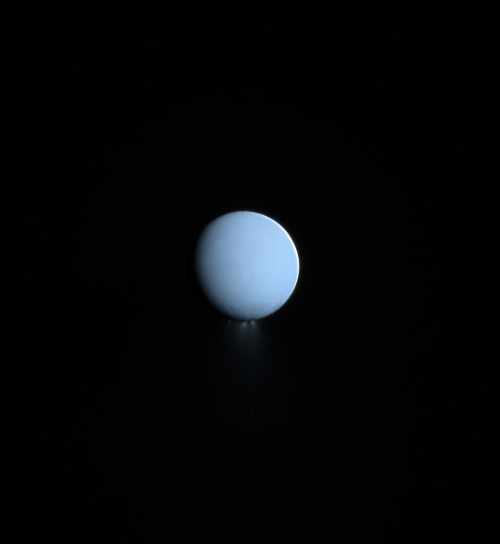



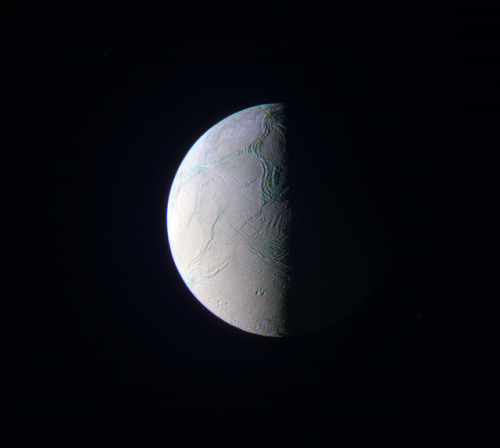

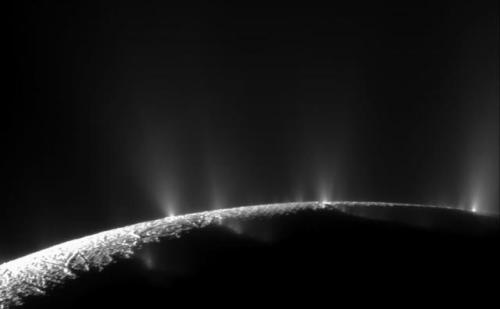

Enceladus
Enceladus is one of the major inner moons of Saturn along with Dione, Tethys, and Mimas. It orbits Saturn at a distance of 148,000 miles (238,000 km), falling between the orbits of Mimas and Tethys. It is tidally locked with Saturn, keeping the same face toward the planet. It completes one orbit every 32.9 hours within the densest part of Saturn’s E Ring, the outermost of its major rings, and is its main source.
Enceladus is, like many moons in the extensive systems of the giant planets, trapped in an orbital resonance. Its resonance with Dione excites its orbital eccentricity, which is damped by tidal forces, tidally heating its interior, and possibly driving the geological activity.
Enceladus is Saturn’s sixth largest moon, only 157 miles (252 km) in mean radius, but it’s one of the most scientifically compelling bodies in our solar system. Hydrothermal vents spew water vapor and ice particles from an underground ocean beneath the icy crust of Enceladus. This plume of material includes organic compounds, volatile gases, carbon dioxide, carbon monoxide, salts and silica.
With its global ocean, unique chemistry and internal heat, Enceladus has become a promising lead in our search for worlds where life could exist.

In 2005, Cassini’s multiple instruments discovered that this icy outpost is gushing water vapor geysers out to a distance of three times the radius of Enceladus. The icy water particles are roughly one ten-thousandth of an inch, or about the width of a human hair. The particles and gas escape the surface at jet speed at approximately 800 miles per hour (400 meters per second). The eruptions appear to be continuous, refreshing the surface and generating an enormous halo of fine ice dust around Enceladus, which supplies material to one of Saturn’s rings, the E-ring.
Several gases, including water vapor, carbon dioxide, methane, perhaps a little ammonia and either carbon monoxide or nitrogen gas make up the gaseous envelope of the plume.
Read more at: solarsystem.nasa.gov
Image credit: NASA/JPL/Cassini & Kevin Gill
-
 kabrox18 reblogged this · 8 months ago
kabrox18 reblogged this · 8 months ago -
 edminh reblogged this · 8 months ago
edminh reblogged this · 8 months ago -
 edminh liked this · 8 months ago
edminh liked this · 8 months ago -
 mrpalms liked this · 8 months ago
mrpalms liked this · 8 months ago -
 wonderingwhatsnext liked this · 8 months ago
wonderingwhatsnext liked this · 8 months ago -
 wonderingwhatsnext reblogged this · 8 months ago
wonderingwhatsnext reblogged this · 8 months ago -
 krustyspacepimpadventurediary reblogged this · 8 months ago
krustyspacepimpadventurediary reblogged this · 8 months ago -
 visionautiks liked this · 8 months ago
visionautiks liked this · 8 months ago -
 powlor liked this · 8 months ago
powlor liked this · 8 months ago -
 roundabouttotheedge reblogged this · 8 months ago
roundabouttotheedge reblogged this · 8 months ago -
 xploseof reblogged this · 8 months ago
xploseof reblogged this · 8 months ago -
 edweenie liked this · 9 months ago
edweenie liked this · 9 months ago -
 cemeterys reblogged this · 9 months ago
cemeterys reblogged this · 9 months ago -
 mifawarts reblogged this · 9 months ago
mifawarts reblogged this · 9 months ago -
 mortuusflores reblogged this · 9 months ago
mortuusflores reblogged this · 9 months ago -
 saint-laika reblogged this · 9 months ago
saint-laika reblogged this · 9 months ago -
 botryoidal reblogged this · 9 months ago
botryoidal reblogged this · 9 months ago -
 sweetannie66 liked this · 9 months ago
sweetannie66 liked this · 9 months ago -
 nostalgiaispeace liked this · 9 months ago
nostalgiaispeace liked this · 9 months ago -
 a-god-in-ruins-rises reblogged this · 9 months ago
a-god-in-ruins-rises reblogged this · 9 months ago -
 acerimmeradel liked this · 9 months ago
acerimmeradel liked this · 9 months ago -
 cfnmmakesmehard liked this · 9 months ago
cfnmmakesmehard liked this · 9 months ago -
 prettybeatup liked this · 9 months ago
prettybeatup liked this · 9 months ago -
 rauhbutz liked this · 9 months ago
rauhbutz liked this · 9 months ago -
 joespinell reblogged this · 9 months ago
joespinell reblogged this · 9 months ago -
 joespinell liked this · 9 months ago
joespinell liked this · 9 months ago -
 lilo15 reblogged this · 9 months ago
lilo15 reblogged this · 9 months ago -
 jonovos liked this · 9 months ago
jonovos liked this · 9 months ago -
 divaani liked this · 9 months ago
divaani liked this · 9 months ago -
 journeythroughtherain reblogged this · 9 months ago
journeythroughtherain reblogged this · 9 months ago -
 weareallinthegutter liked this · 9 months ago
weareallinthegutter liked this · 9 months ago -
 dagwud reblogged this · 9 months ago
dagwud reblogged this · 9 months ago -
 dagwud liked this · 9 months ago
dagwud liked this · 9 months ago -
 faxe72 liked this · 9 months ago
faxe72 liked this · 9 months ago -
 thunderapache-blog reblogged this · 9 months ago
thunderapache-blog reblogged this · 9 months ago -
 thunderapache-blog liked this · 9 months ago
thunderapache-blog liked this · 9 months ago -
 fusehund reblogged this · 9 months ago
fusehund reblogged this · 9 months ago -
 mikeawood reblogged this · 9 months ago
mikeawood reblogged this · 9 months ago -
 mikeawood liked this · 9 months ago
mikeawood liked this · 9 months ago -
 martinm liked this · 9 months ago
martinm liked this · 9 months ago -
 mdall8 liked this · 9 months ago
mdall8 liked this · 9 months ago -
 allergic-to-chocolate reblogged this · 9 months ago
allergic-to-chocolate reblogged this · 9 months ago -
 allergic-to-chocolate liked this · 9 months ago
allergic-to-chocolate liked this · 9 months ago -
 shallow-www reblogged this · 9 months ago
shallow-www reblogged this · 9 months ago
For more content, Click Here and experience this XYHor in its entirety!Space...the Final Frontier. Let's boldly go where few have gone before with XYHor: Space: Astronomy & Spacefaring: the collection of the latest finds and science behind exploring our solar system, how we'll get there and what we need to be prepared for!
128 posts